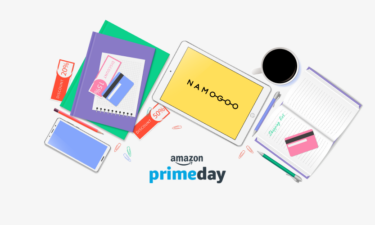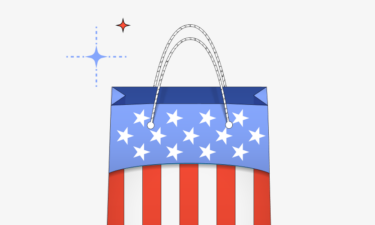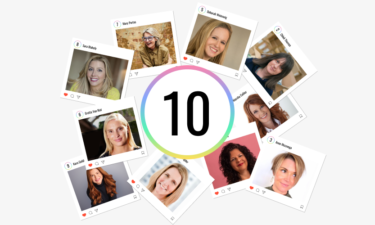eCommerce is evolving. Mobile traffic has bypassed desktop traffic, internet speeds are increasing with the rise of 5G connectivity, and social media platforms are expanding exponentially. Live commerce is leveraging these developments to reduce the gap between the product and the shopper.
So, what’s this new eCommerce strategy all about? Is the hype justified? Let’s find out.
What is Live Commerce?
Live commerce, also known as Livestream eCommerce, leverages livestreams and real-time events to offer one-click purchases of featured products. Social media and video platforms including TikTok, Facebook, YouTube, and Instagram are ideal mediums to execute this upcoming strategy due to their inherent ability to accommodate video streaming, viewing, and sharing operations.
Besides creating livestreams and demonstration videos, live commerce includes the widespread use of influencers, whose popularity is leveraged with paid sponsorships that automatically improve exposure.
In China, shoppers are embracing live commerce, with a 10% market penetration over the last 5 years. The compound annual growth rate (CAGR) has grown by almost 300% since 2017, a trend that has been accelerated by the ongoing COVID-19 pandemic. This shopping shift is no longer exclusive to APAC, as live commerce is a growing trend in the US. By 2024, it is predicted that livestream eCommerce sales will grow to $35 billion in the US alone.
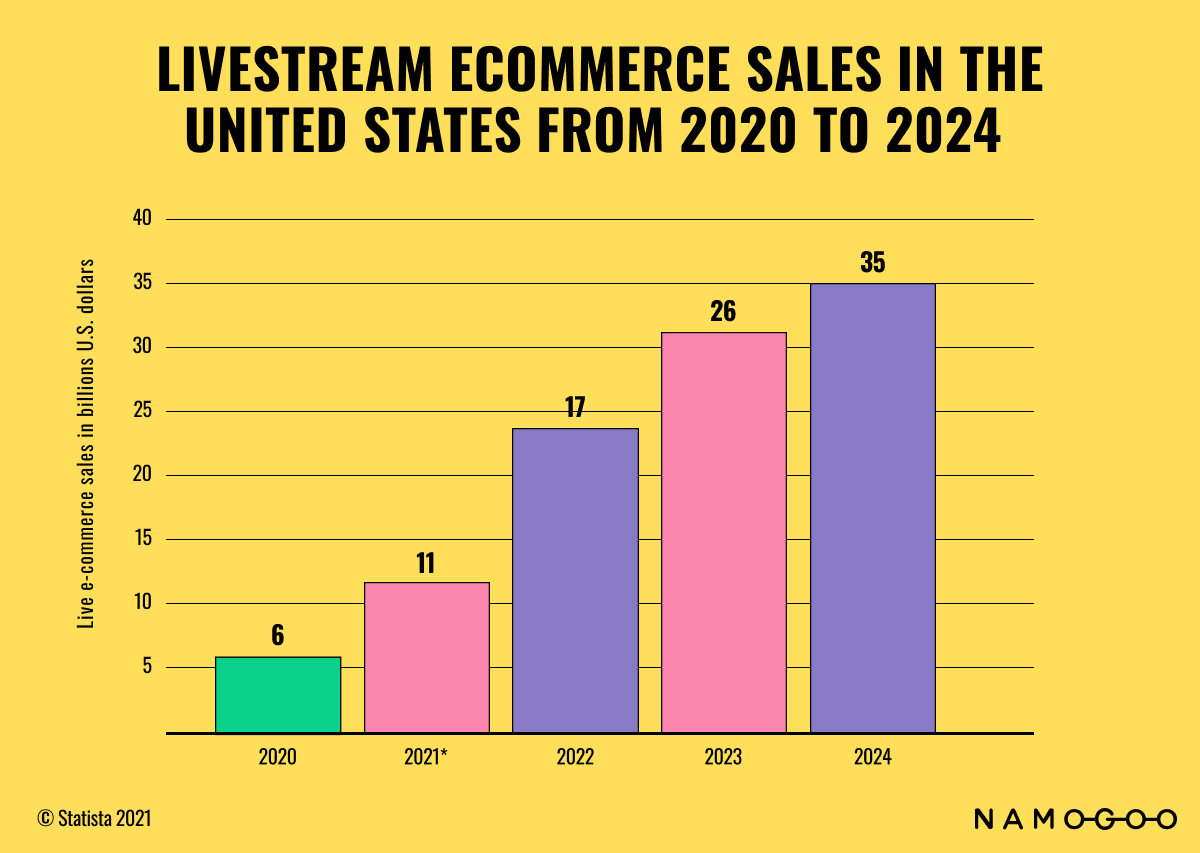
Source: Statista
What Shoppers are Buying on Livestreams
Due to the inherent product demonstrative nature of livestreams, shoppers are buying tangible goods rather than services. Apparel and fashion are seeing the largest growth, as 36% of livestreamers feature these products.
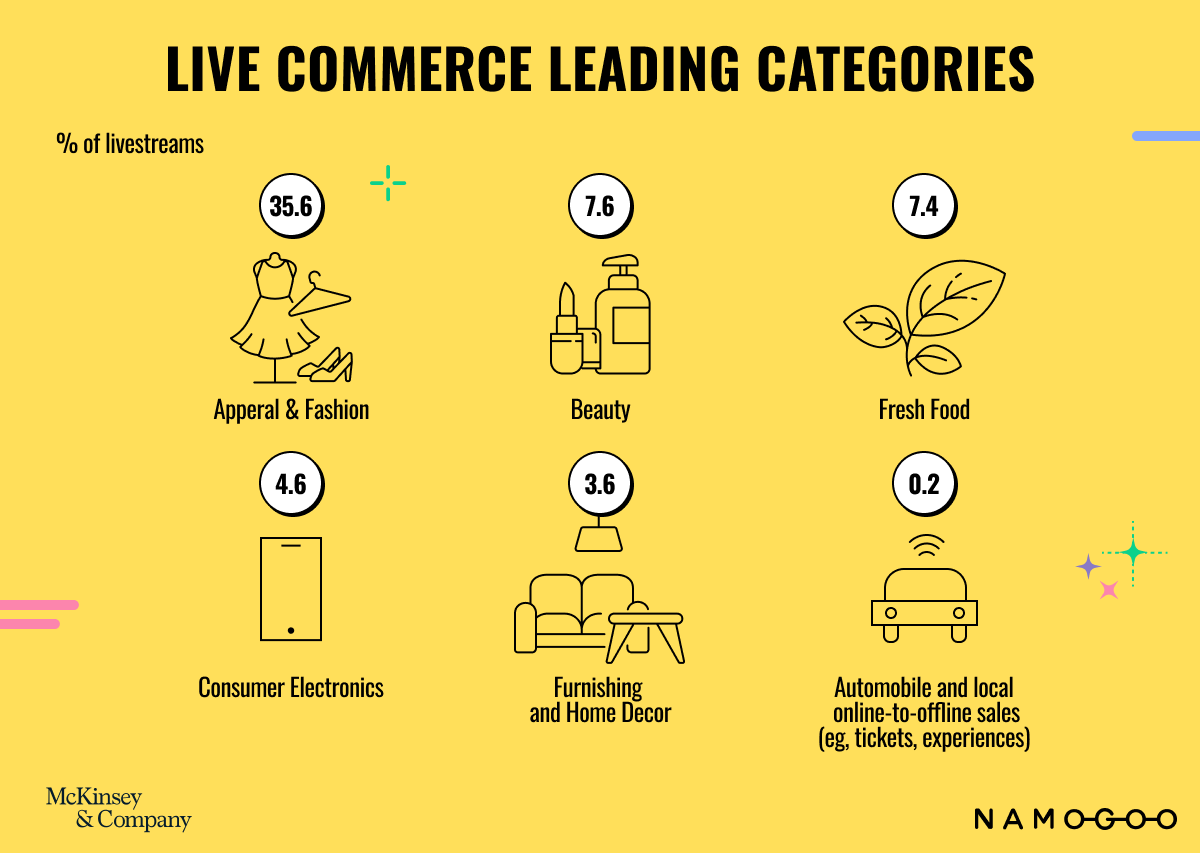
Source: McKinsey
- Apparel and Fashion – H&M, Macy’s, Uniqlo, and even luxury brands like Gucci and Chanel are realizing the potential of live commerce.
- Beauty and Cosmetics – Companies like L’Oréal and Avon are already strongly invested, but the smaller brands are also joining the game.
- Fresh Food – The ongoing COVID-19 pandemic has accelerated the growth of fresh food and grocery eCommerce sales.
- Consumer Electronics – Besides being extremely popular during the holiday season, more and more influencers are endorsing tech brands.
- Furnishing and Home Decor – It’s often hard to pull the trigger when it comes to furnishing items shown online, a problem live commerce is solving.
As live commerce continues to grow, the breadth in product offerings will likely expand further.
Top Benefits of Live Commerce
Live commerce is helping eliminate the shortcomings of traditional eCommerce. The concept itself allows for shoppers to be more confident in their purchases. By seeing a product featured on a livestream, shoppers know what they’re buying before the package arrives at their doorstep. For eCommerce purchases, live commerce takes away the negative surprise factors of online purchases. Keep reading for the eight main benefits of implementing a well-planned live commerce strategy.
- Demonstrated Value in Real-Time
Unlike traditional commercials and banners, live commerce is all about getting instant results. Potential shoppers are connected to the influencer or event in real-time, where they see the product in action. When executed properly, the product features and benefits are showcased instantly, pushing shoppers into a “buy now” mindset. The Fear of Missing Out (FOMO) factor is also amplified. - Accelerated Conversions
In-app livestreams, live events, and in-video promotions with popups or buttons promote smoother purchasing. Reservations can be made with a single message or purchases can be made with just a few clicks, shortening the user journey significantly. Since there are fewer barriers to make payments, the likelihood of impulse buying increases. Live commerce is convenient for shoppers, and convenience promotes conversions.
- Reduced Advertising and Distribution Costs
Using influencers and live events allows businesses to reduce their investment in paid campaigns and other expensive promotions. Live commerce also lowers overhead costs when products are sold directly to consumers, creating smoother processing operations and faster shipping to consumers. These crucial improvements help lower operational costs and streamline overall expenses. - Improved Customer Experience
With live commerce, influencers become your floor salespeople. They show how the product is used, give a live explanation of how things work, and address customer concerns in real-time. All questions are squashed in a matter of minutes, with live chats also allowing people to interact and feel the pulse. Unlike other eCommerce strategies, customer experience gets top priority with live commerce.
- Better Engagement and Community Expansion
Millions of shoppers are following influencers on social media today. When a leading persona becomes a brand ambassador, this instantly expands the community and translates into better engagement. Every livestream becomes a potential goldmine, with thousands of potential shoppers locked in and ready to make the purchase. This is known as the Stimulus-Organism-Response (S-O-R) model.
- Attracting a Global Audience
Traditional sales and marketing required businesses to target specific segments and geolocations. While these factors are still very much relevant in the big picture, live commerce allows marketers to reach wider audiences by default. Shoppers can access your live events and streams from anywhere in the world, giving you the ability to penetrate multiple markets at once.No celebrity is too big to be a part of this shift. Kim Kardashian co-hosted a livestream with Chinese celebrity Viya Huang during the 2019 holiday season. Her stock of 150,000 KKW perfumes, priced at $47 each, was sold out in seconds.
Kim Kardashian on Tmall’s Global Livestream with Over 13 Million Viewers - Improved Customer Lifetime Value (CLV)
Live commerce is improving repeat customer rates since your brand image gets a huge boost with every live event or broadcast you promote. Also, experts and influencers boost brand credibility and retention rates. Once a shopper has viewed your livestream or recorded event with a well-followed celebrity or influencer endorsing your product, chances are this will not be a one-off purchase. - Faster Time to Market New products and feature launches usually require elaborate marketing campaigns that involve video production, content creation, and setting up expensive booths in multiple expos. With live commerce, all you need to do is hype up a launch event or live demonstration by an esteemed influence to get your message through, all via an authentic digitalized brick-and-mortar experience.
Related: When Social Media Meets eCommerce
Live Commerce Platforms To Consider in 2022
As you can see in the graph, YouTube, Facebook Live, and Instagram Live are the three most popular livestream eCommerce platforms in the United States, with Amazon Live and TikTok following close behind. Let’s take a closer look.
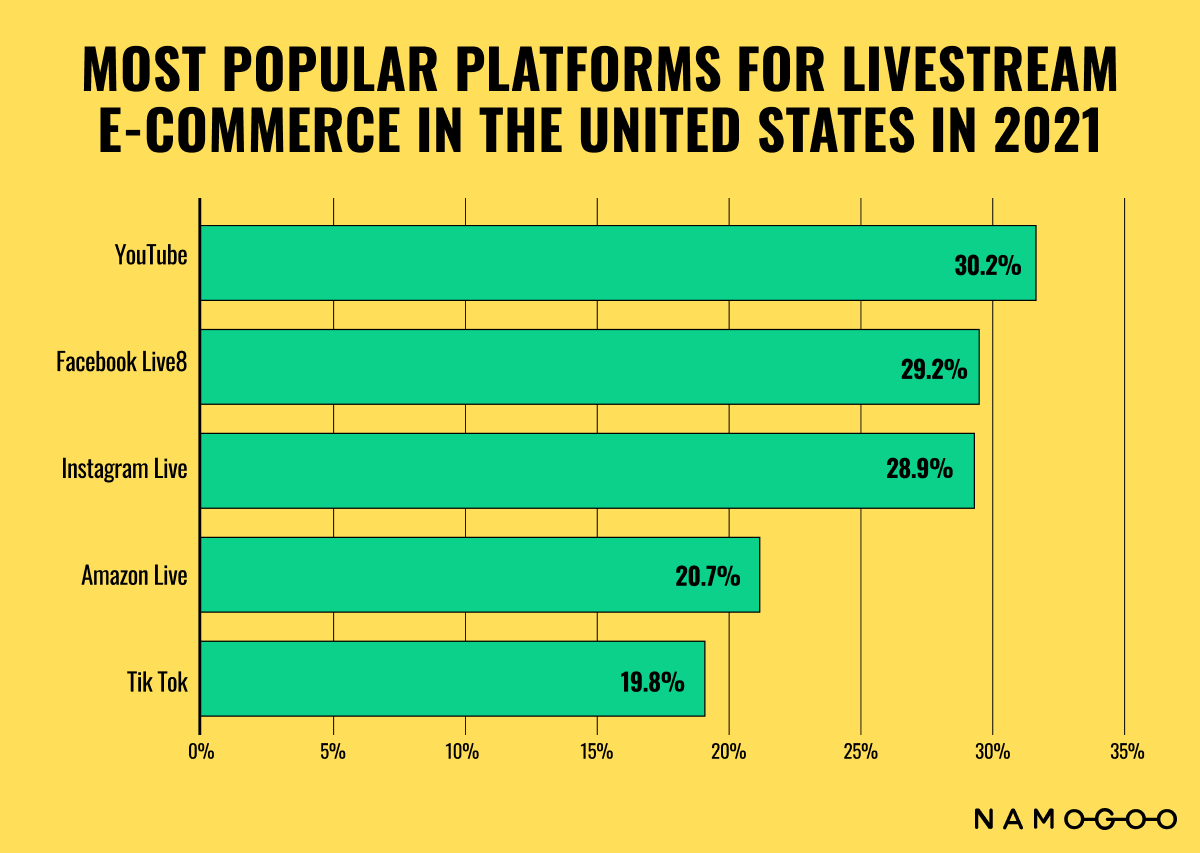
Source: Statista
YouTube Live Shopping
YouTube has 122 million active daily users, and over 1 billion hours of online video content is streamed daily on this platform. When it comes to the United States, over 60% of YouTube users access the platform on a daily basis.
A recent study revealed that 89% of viewers trust YouTube creator recommendations, suggesting that the integration of direct to viewer product sales through livestreaming is a great fit for the existing video platform. YouTube allows free 360° shoppable livestreaming, which was featured extensively in this year’s Holiday Stream and Shop event in November. Leading celebrities, content creators, and influencers including Gordon Ramsay, Jackie Aina, Merrell Twins, and Patrick Starrr were seen promoting and selling merchandise with CTA buttons embedded in their livestreams.
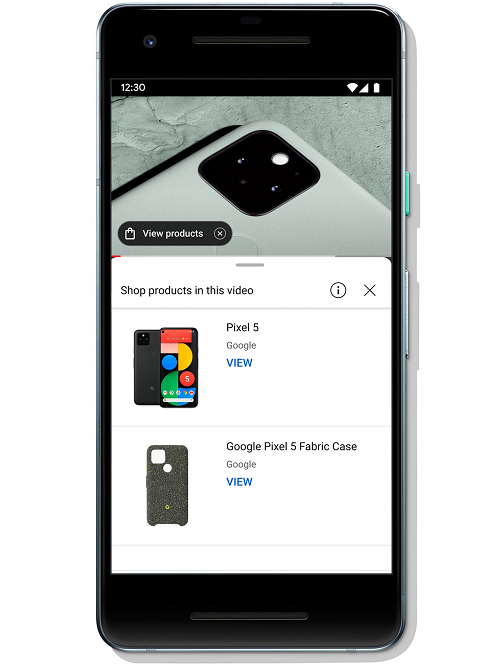
Source: Social Media Today
Facebook Live
Facebook has over 2.90 billion monthly active users, and their recent initiatives demonstrate that Facebook is looking to also capitalize on live commerce. For instance, in summer 2021, they launched “Live Shopping Fridays,” in which Facebook invited big brands to showcase their products through demos on livestreams. Additionally, Facebook Shops is a cross-platform live commerce option for businesses looking to extend their reach and engage with their customers via other related channels like WhatsApp and Messenger. Yes, you also get the Shopify integration.
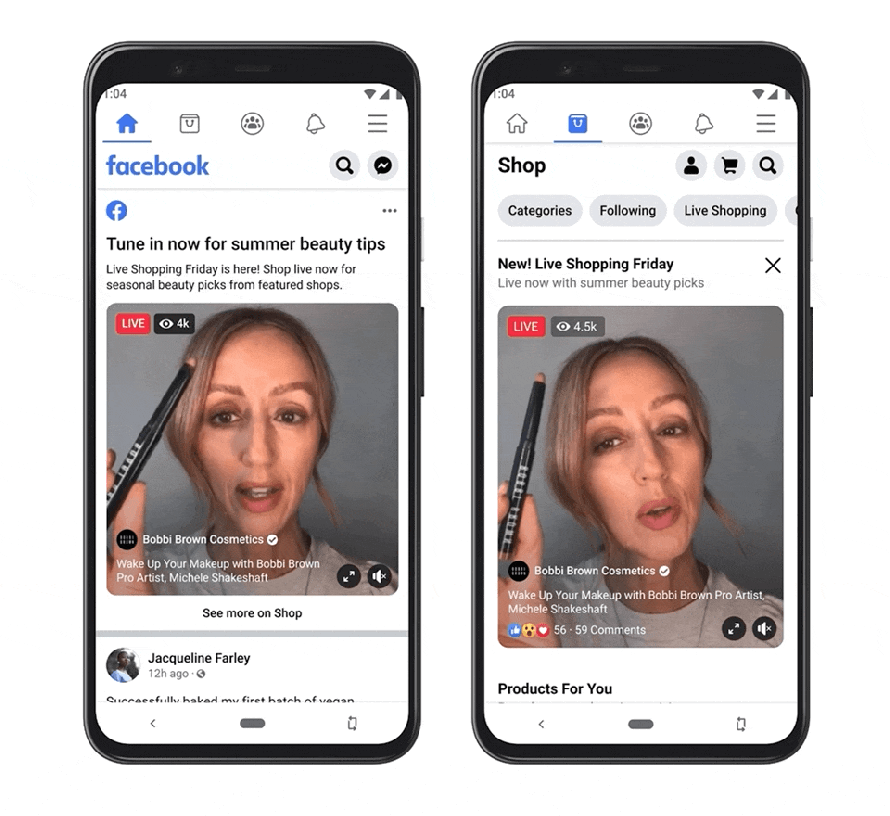
Source: FB
Instagram Live
Instagram for Business is now a popular live commerce channel due to the high engagement rates, as over 90% of users follow a minimum of one business account. Once you’ve optimized your Instagram business account with a compelling bio and a profile image that’s consistent with your branding, you’ll also need to configure your action buttons before sharing high-quality posts with strong captions.
Businesses can now share status updates and run livestreams with customizable CTAs that shorten the purchase process, while demonstrating value instantly for increased conversion rates.
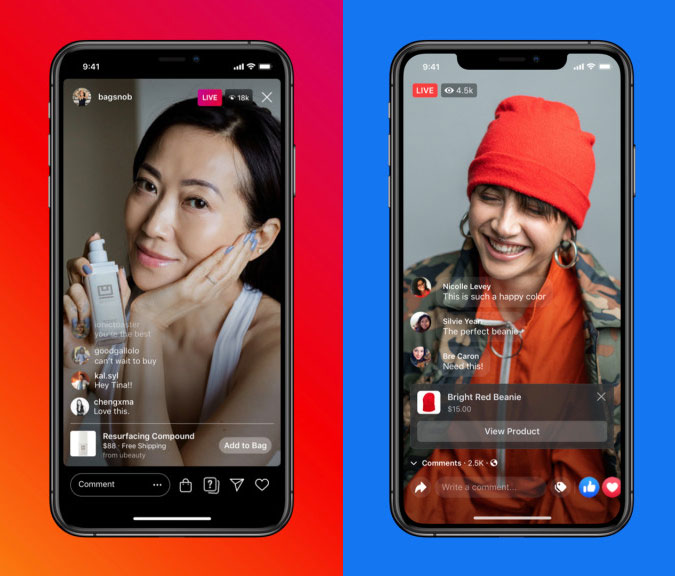
Source: Power Retail
TikTok Livestream
It’s hard to deny TikTok’s popularity with over 1 billion monthly active users today, including over 130 million in the United States alone. More than 60% of US-based TikTok users are below the age of 29, making it an attractive option for fashion, footwear, and cosmetics sales. TikTok LiveStream Shopping was developed exactly with that in mind and Shopify has even been an active partner in this project.
How does one get started? Just register as a Shopify Merchant, and open a TikTok for Business account. You can then add a “Shopping Tab” to your TikTok profile and sync your product catalogue with the app to create customized mini-storefronts.
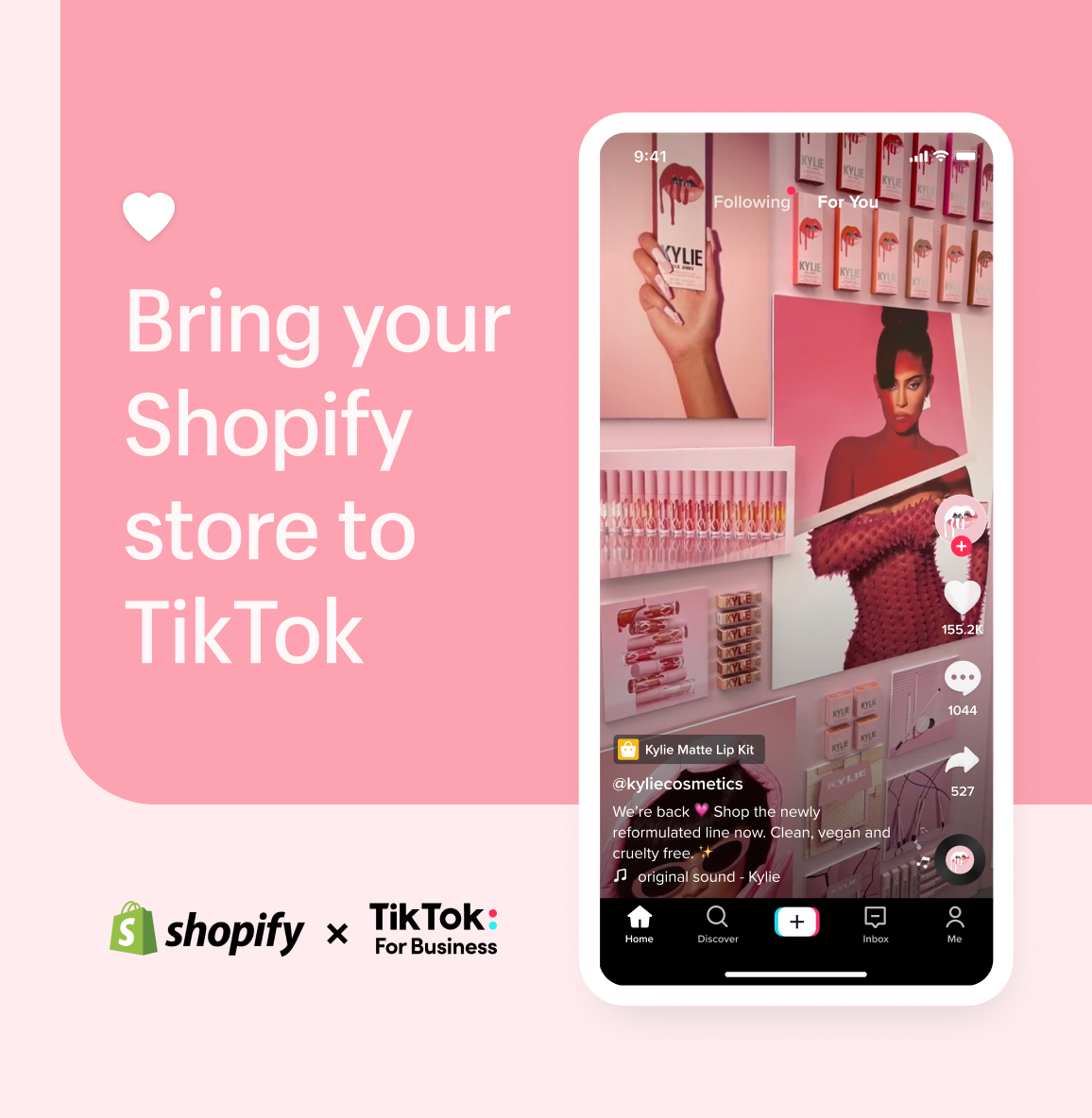
Source: Shopify
OOOOO
The United Kingdom has its own live-streaming and interactive entertainment eCommerce platform, called OOOOO. This project was planned and created by Sam Jones, former executive at Wish.com and Eric Zhange, formerly at TikTok.
Launched just in November 2020, the application now boasts over 200,000 downloads. Live fashion shows are getting over 10,000 viewers with sales figures that are growing via the shoppable video interfaces. Shoppers are engaged due to the gamified interface that allows them to win coupons and discounts.
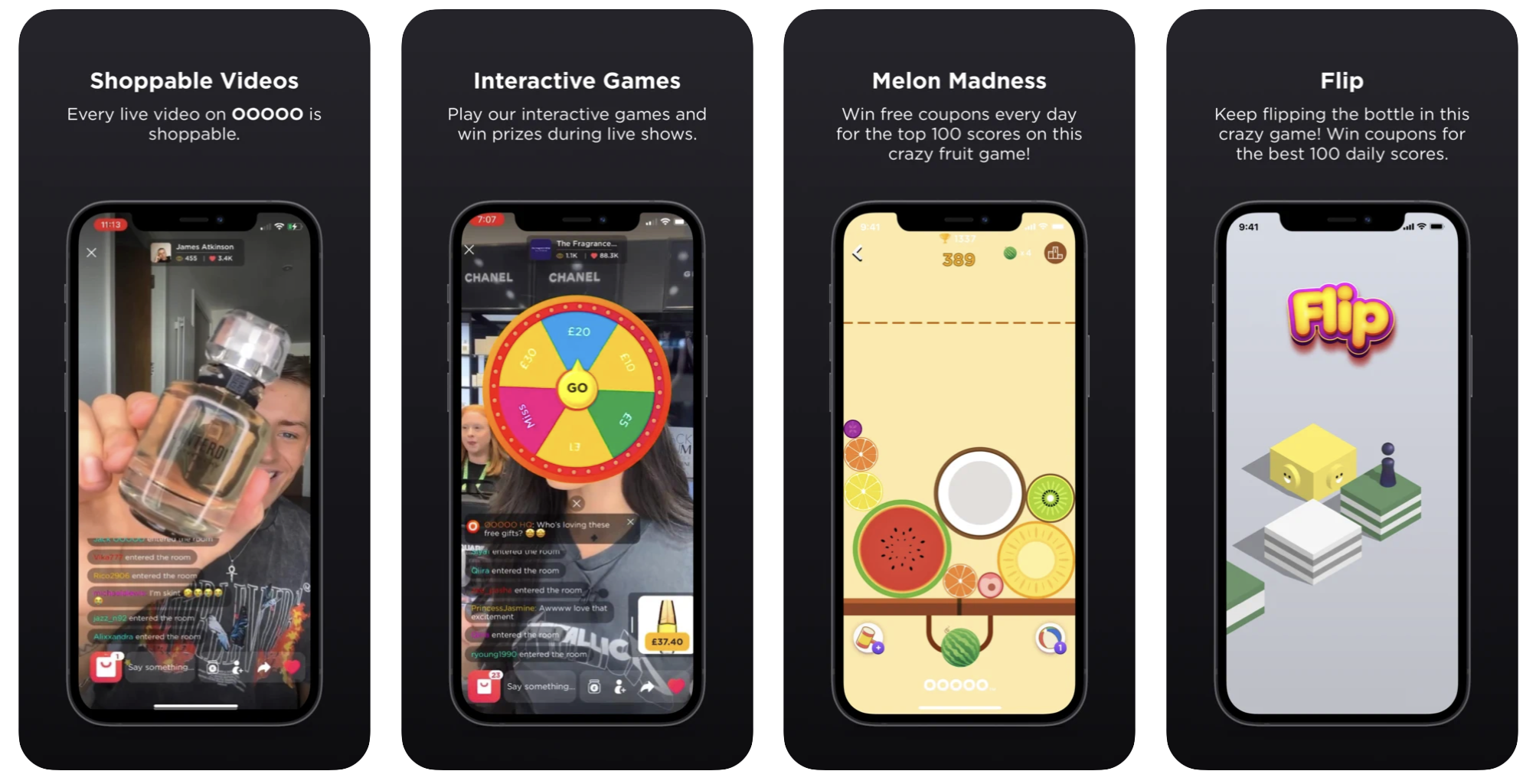
Courtesy: OOOOO
Live Commerce Is Here to Stay
The use of live commerce is becoming more mainstream, as it helps businesses reduce the gap between the product and the shopper.
More and more social media platforms are recognizing this eCommerce shift and working on their own solutions. Twitter’s new livestream shopping platform is looking to become the next big thing, with Walmart already prepared to test it ahead of the 2021 holiday season. Augmented Reality (AR) is also an emerging channel that’s going to play a big part in 2022 and beyond as an even more immersive tool for shoppers to browse products from every angle.
These new and engaging shopping experiences are also amplifying brand awareness and boosting conversion rates. Businesses are coming across as more authentic, brand ambassadors and influencers are making a change in their respective communities, and shoppers are accessing the products that they really want or need – a win-win situation for all involved.




